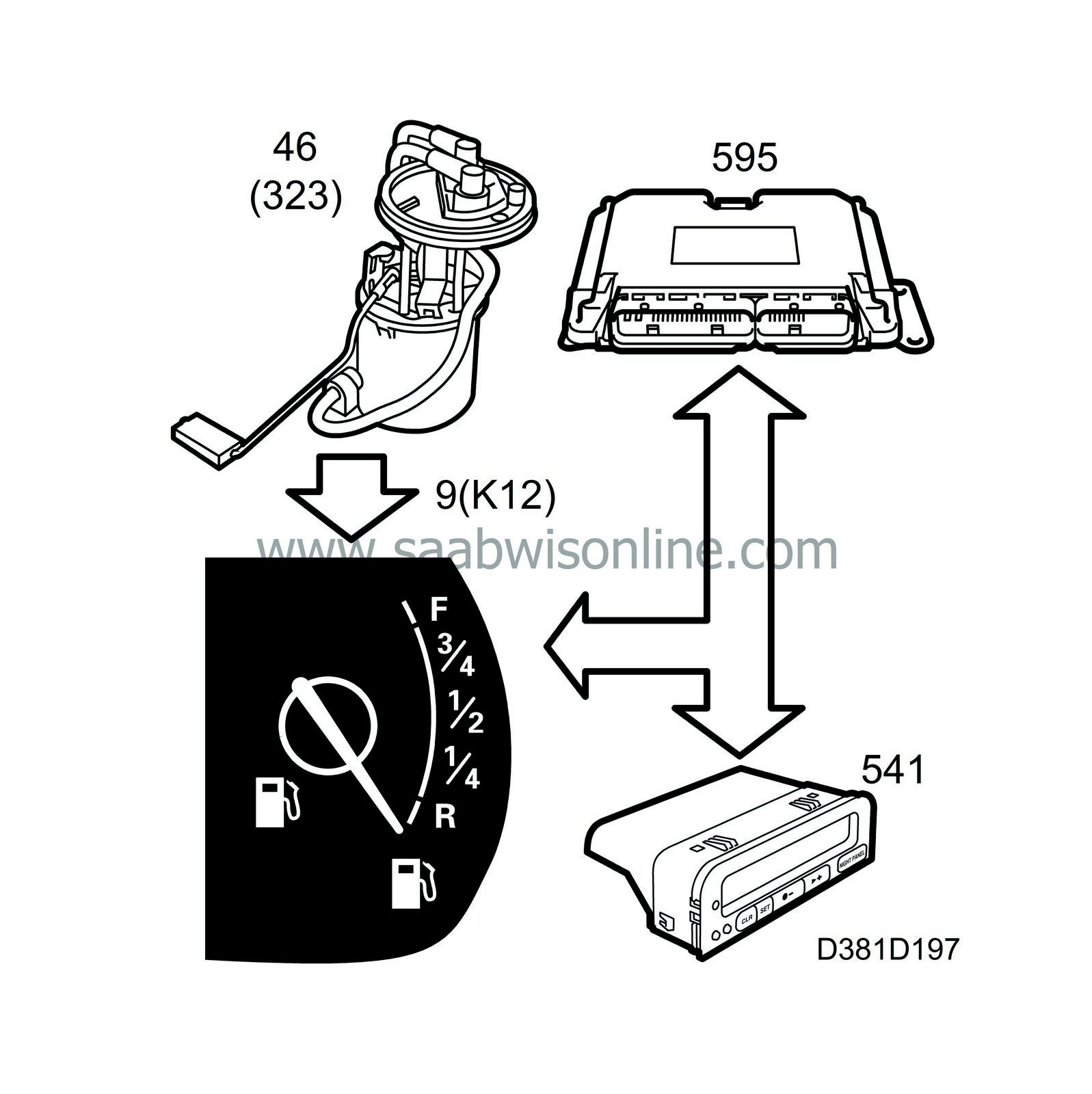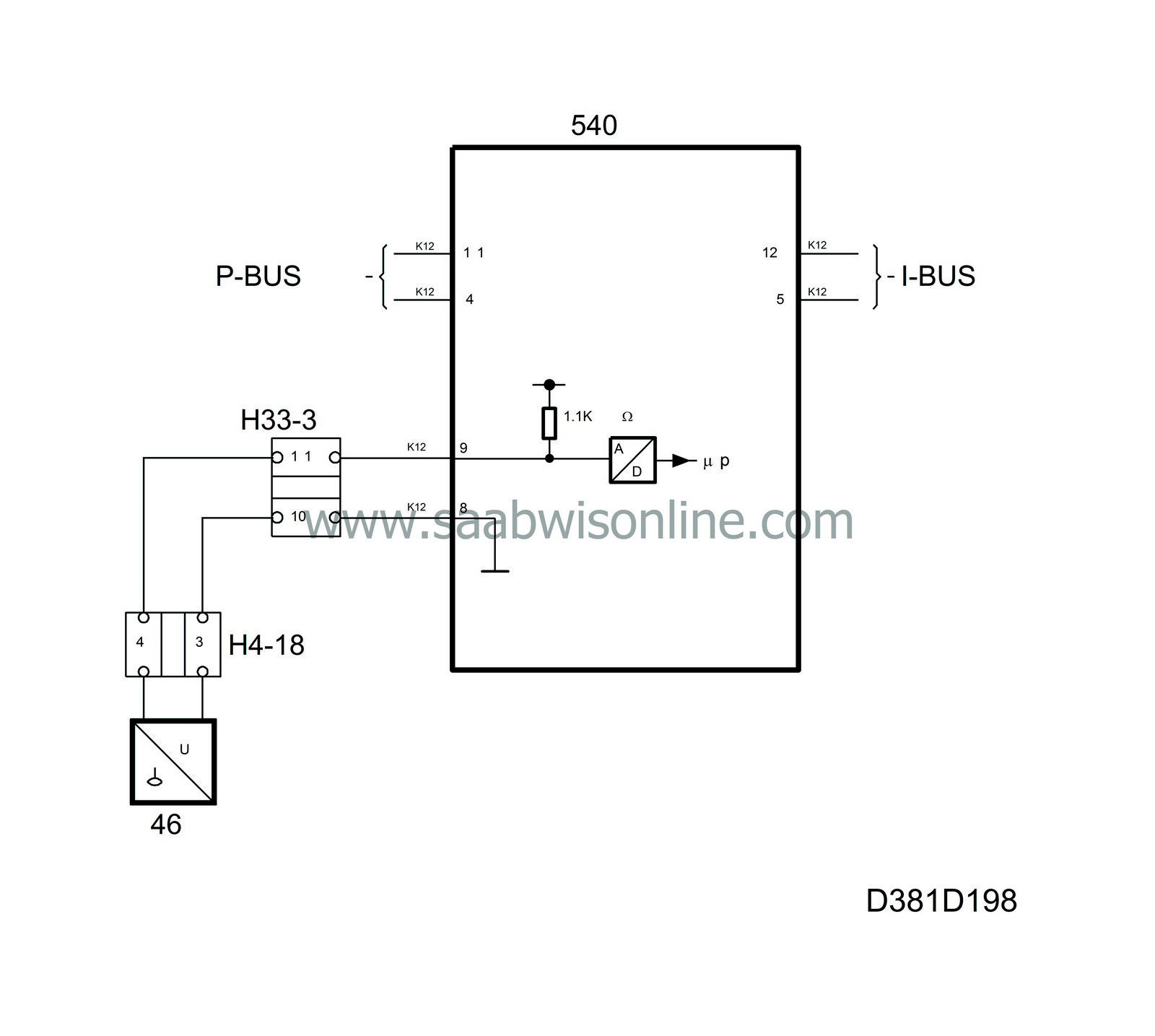Fuel gauge
| Fuel gauge |
The fuel gauge informs the driver how much fuel is left in the tank. It consists of a fuel gauge in the main instrument unit and a level sensor in the tank.


The resistance of the level sensor is variable and corresponds to the level of the sensor's float in the tank. Resistance increases as the level of fuel in the tank rises. Sensor resistance with an empty tank is 602.6 ohms and with a full tank 3906 ohms.
The sensor is supplied with 12 V from pin 9 (K12) via a 1.1 kohm resistor integrated in the main instrument display panel. The sensor is grounded via main instrument display panel pin 8 (K12).
The main instrument unit detects the sensor's resistance and controls the current to the fuel gauge so that the position of the meter needle corresponds to the resistance of the sensor.
To give a more accurate reading at low fuel levels, the main instrument unit's control module switches to measuring fuel consumption when the fuel level in the tank is below 10 litres.
The main instrument unit control module sends information on the fuel level to the buses.
Diagnosis
An open circuit/short circuit sets diagnostic trouble code B1720. The gauge needle indicates 0 litres and the fuel reserve indicator lamp lights up.| Fuel reserve indicator lamp |
With about 10 litres of fuel remaining in the tank, the lamp lights up to indicate low fuel level. The lamp is supplied with current from the main instrument unit and grounded by the main instrument unit's control module when it is to be lit.
The main instrument unit lights this lamp for three seconds when the ignition is switched on.
| Additional low fuel-level warning |
When there are 3 litres of fuel remaining in the tank, the main instrument unit sends the message “STOP FOR FUEL”, unit ON. The message then appears on the SID.
| Fuel consumption |
EDC 15 sends information on the fuel consumption to the bus, unit ml.
The main instrument unit control module uses the information to control the fuel gauge (under 10 litres).


